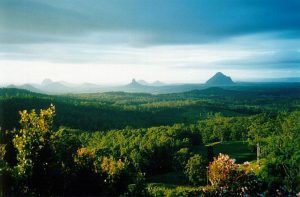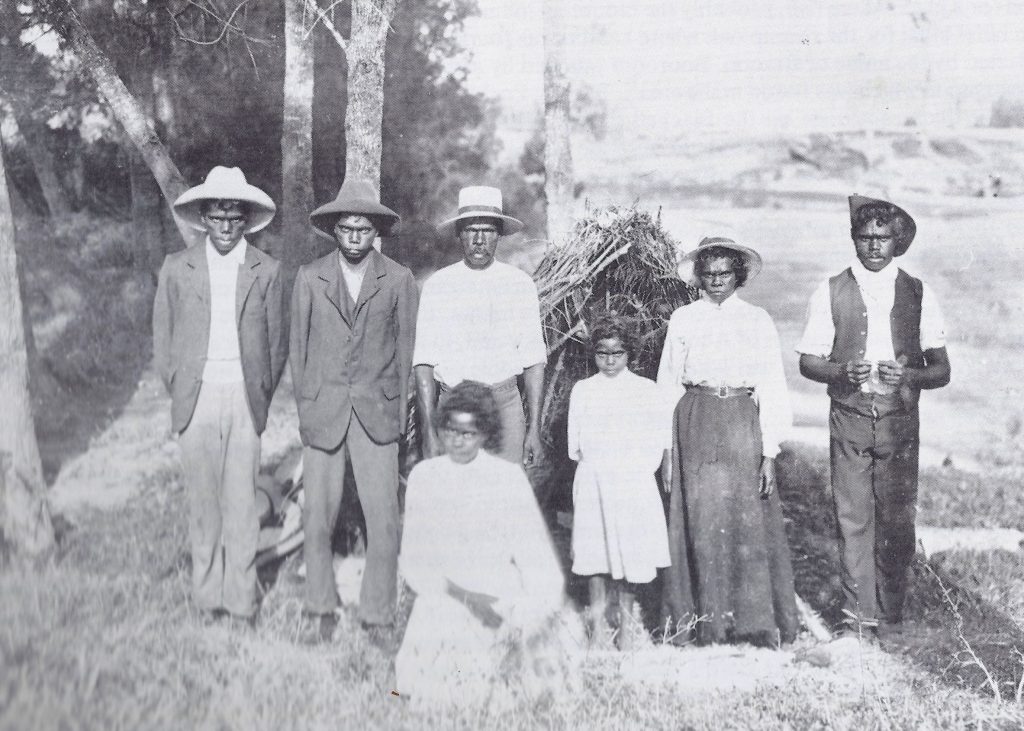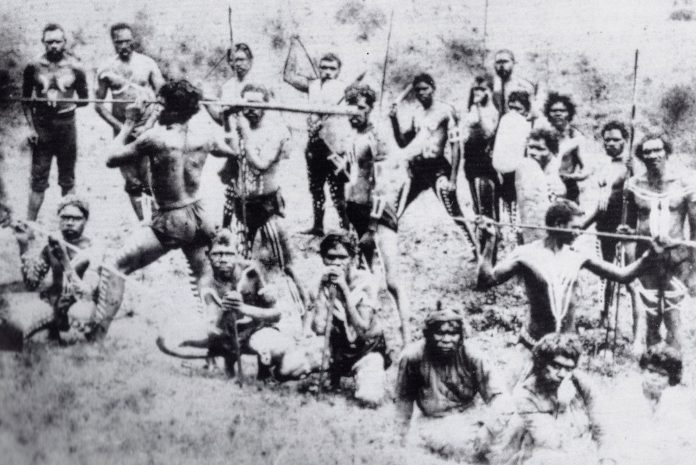For thousands of years before Captain James Cook sailed the coastline in 1770, the Gubbi Gubbi were hunting, fishing and caring for their home on the Sunshine Coast.
The Gubbi Gubbi language group was made up of a number of tribes. Among them, the Undanbi whose territory was on the coast, east of their pathway from Beerburrum to Cooran, and the Nalbo to the west.
The Nalbo had been driven east by the Dallambara, who were also rainforest people. Tribal boundaries were often simply a mark carved into a tree.
They hunted on the range, fished the rivers and gathered seafood from the ocean.
The Gubbi Gubbi (once spelt Kabi Kabi because the soft “G” sounds more like a “K”) roamed the area from the north bank of the Pine River to the Johnson River north of Maryborough and west to Kilkivan and back along eastern side of the ranges to Woodford.

The Undanbi who lived near the mouth of the Mooloolah River (Mooloolaba) built huts and were among the few South East Queensland people to leave examples of their art – pictures of kangaroos, emus and dingo footprints in caves on Point Cartwright.
They had distinctive tribal markings and a well-planned society dependent on a strong spiritual and cultural life. It was a matrilineal society, the woman’s name being given to the land and the tribe.
The women collected food such as roots and yams, seeds, honey, fruits and eggs, caught lizards and snakes and fetched water and firewood.
They also cared for the children and built the family’s shelter as well as making string bags, baskets and ornaments from plant and animal fibres.
Help keep independent and fair Sunshine Coast news coming by subscribing to our free daily news feed. All it requires is your name and email. See SUBSCRIBE at the top of this article
The men were hunters and fishermen, making weapons, implements, canoes, containers and ceremonial objects. Children, and generally there were few, were indulged.
John Matthew (1849-1929), who lived with the people and had a strong grasp of their language, in 1910 recorded his observations in his book “Two Representative Tribes of Queensland.”
This is accepted by the Gubbi Gubbi as the most authoritative account as there has been a lot of guesswork since.
Matthews described the people and their habits in considerable detail: “The men were of low stature, the average would not exceed 5ft 5”. In rare cases a height of about 6ft was attained. In proportion to the men, the women were rather tall.
“The people were light in bone. In walking the head was thrown well back. The hair was luxuriant and wavy”.
The Gubbi Gubbi’s fishing techniques rival today’s best tips. They would use the sap extracted from a scrub vine to drug fish in waterholes.
If placed in the upper section of a waterhole, the drug would permeate the hole leaving the fish helpless so they could be caught by hand.

Around swampy areas, a reed called Smortweed grew. The natives found that by cutting small sections of the reed and dropping them end-first into the water, the fish could be lured out and captured with relative ease.
Another innovative method came from observation of the periodic occurrence of small white witchetty grubs which usually lived in the bark or sap of trees around creeks. For a few weeks each year, they would crawl upon the branches.
In areas where the branches dropped over the creeks, it was noticed that any grubs, which fell into the water, became food for the Mary River codfish. This provided great fishing opportunities.
The Noosa River, with its lakes in the upper catchment, provided a gentle river system with no great surges of water and an idyllic place for the Gubbi Gubbi to support themselves on what nature provided.
There was an abundance of fish and shellfood on the coast and when a cyclone or bad weather came, they could travel more than 100 miles west to feast on bunya nuts, a most valued food.
They grew nothing but lived off the land, hunting, fishing, and collecting wild fruit and nuts. As a result, food resources determined where they went and they left little footprint on the environment. But they did leave their stories of how the Coast’s geography was created.
After at least 40,000 years, their fortunes changed in the 1800s when the first white men, escaped convicts, arrived and word got back to the Moreton Bay settlement of a rich and forested area to the north.
The place would never be the same again.
This flashback is brought to you by veteran Sunshine Coast journalist and history writer Dot Whittington, also the editor of Your Time Magazine.





